The main difference between pawpaw and papaya is their appearance and taste; pawpaw often has yellow flesh with a mild and slightly tangy flavor, while papaya has orange-red flesh with a very sweet taste. You can also notice that pawpaws are larger and rounder, while papayas are smaller and more slender.
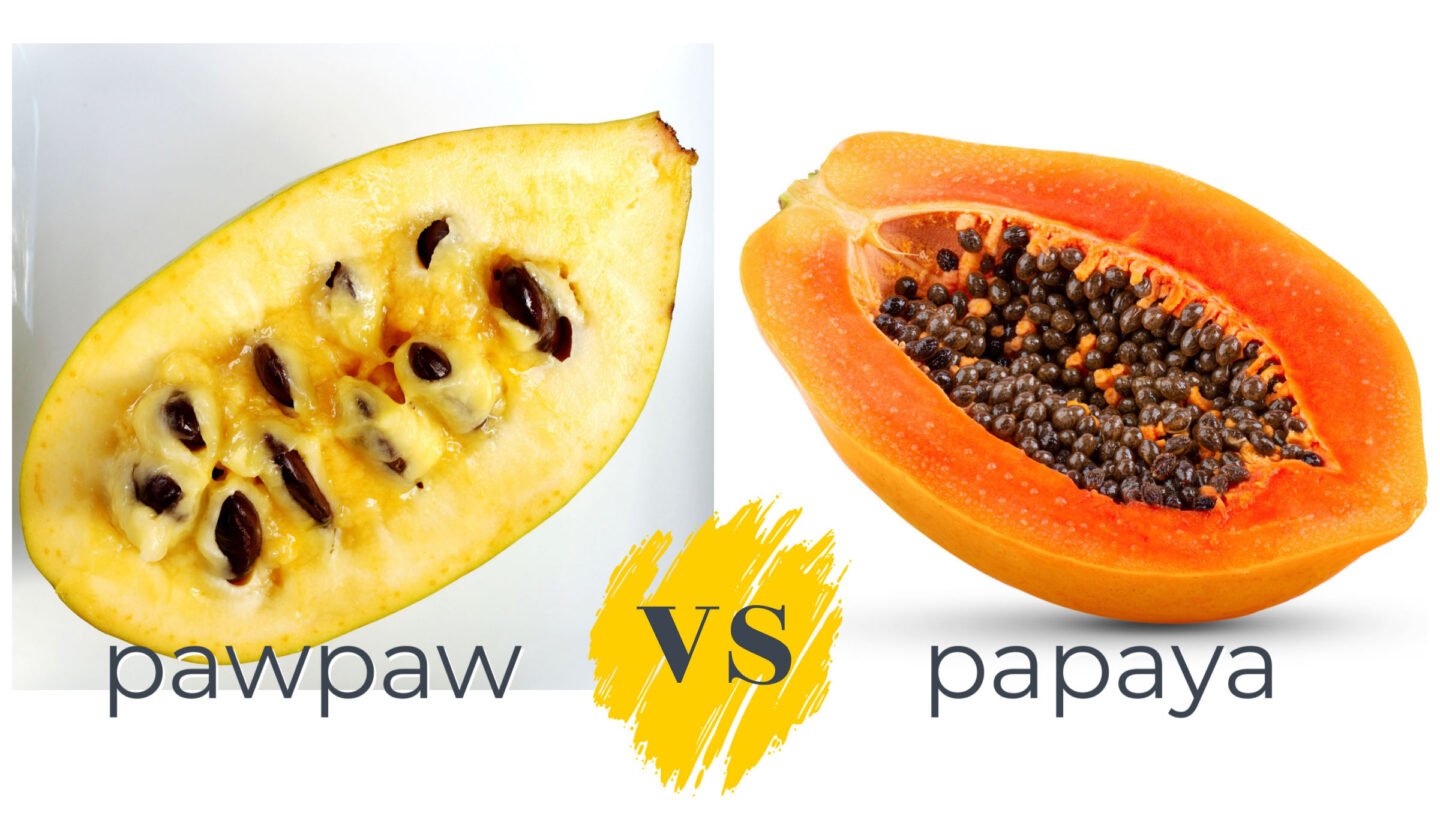
The pawpaw and papaya are both tropical fruit with comparable names and even look similar in appearance at first glance, making it hard to differentiate them at first. Read on to learn all the differences and similarities between pawpaws and papayas, including their origin, appearance, taste, use, storage, and nutritional benefits.
Table of Contents
A Comparison of Pawpaw and Papaya
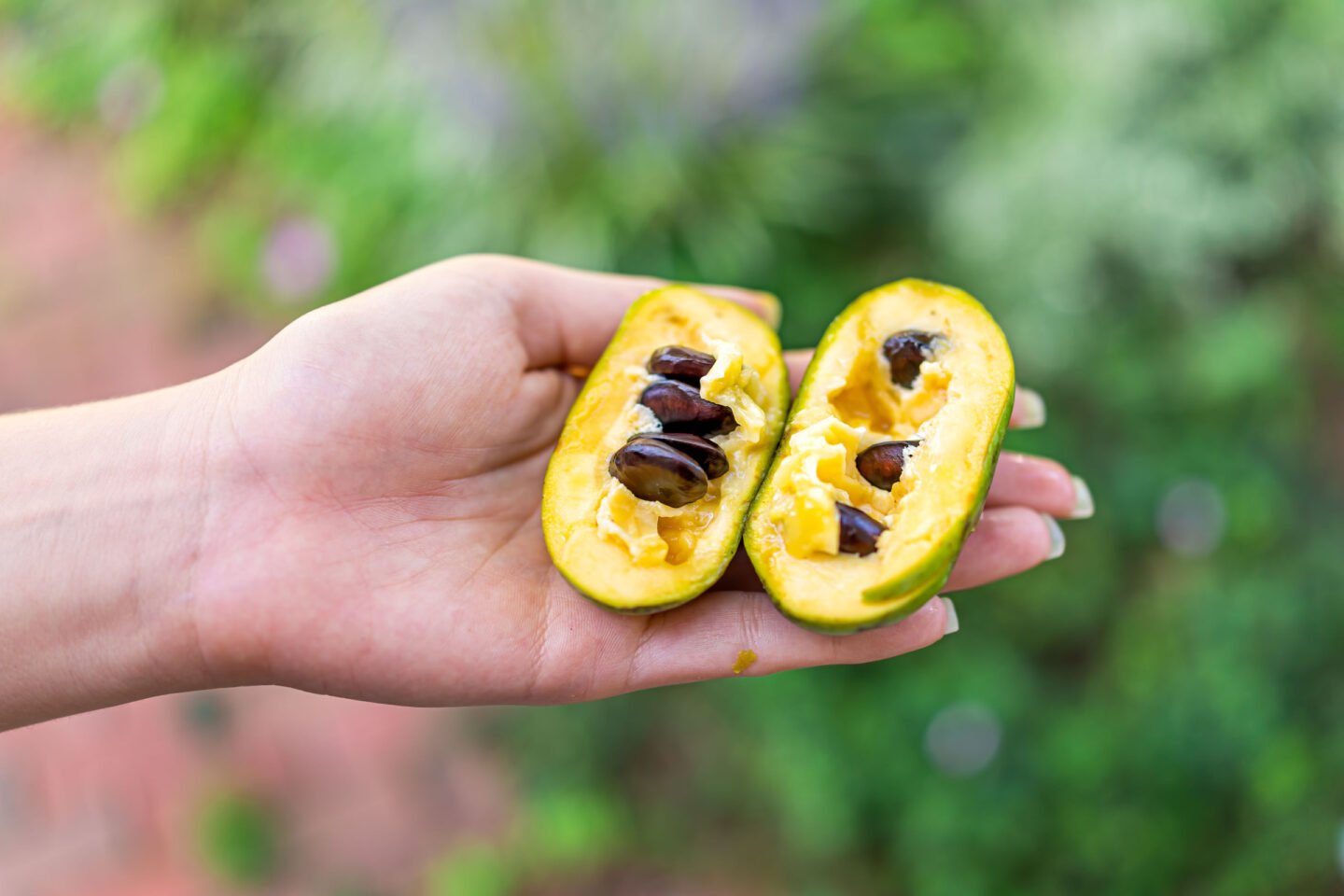
A pawpaw (or papaw) is a large, oval-shaped fruit that has a mild flavor similar to a banana. It has green skin until ripening when it turns yellow with green patches. Papayas are medium-sized fruit, more elongated than pawpaws. They have a sweet, tropical taste and green skin that ripens into a vibrant yellowish-orange.
Want to know more about papayas? Check out our guide on what papayas taste like and how to tell if they’re ready to eat (something easy to get wrong).
| Pawpaw | Papaya | |
|---|---|---|
| Family | Annonaceae | Caricaceae |
| Size | Large | Medium |
| Shape | Oval | Elongated, like a gridiron ball |
| Skin color | Yellow with patches of green | Yellowish orange |
| Flesh color | Yellow with an orange tinge | Reddish pink |
| Flavor | Mild, similar to a banana | Sweet, tropical, a cross between a cantaloupe and mango |
| How to store | In a sealed plastic bag in the fridge | In a sealed plastic bag in the fridge |
| Keeps for | Up to 1 week | Up to 1 week |
| Best uses | Raw, fruit salads, puddings, chutney, salsa | Dried, smoothies, fruit salads, stir fries, desserts, meat tenderizer |
| Tree | Asimina triloba | Carica papaya |
| Area native to | Canada and North America | Mexico and South America |
Size
Pawpaws are larger than papayas. They can grow up to the size of a large marrow, providing enough fruit for a large household. Papayas grow to a similar size as small butternuts; they are smaller than pawpaws.
- 1 medium pawpaw yields approximately: 2 ½ cups of fruit, chopped.
- 1 medium papaya yields approximately: 1 ½ cups of fruit, chopped.
Shape
A papaya is more elongated than a pawpaw. People often compare papayas to a gridiron ball and pawpaws to a soccer ball. You’ll usually find a pawpaw isn’t perfectly round though.
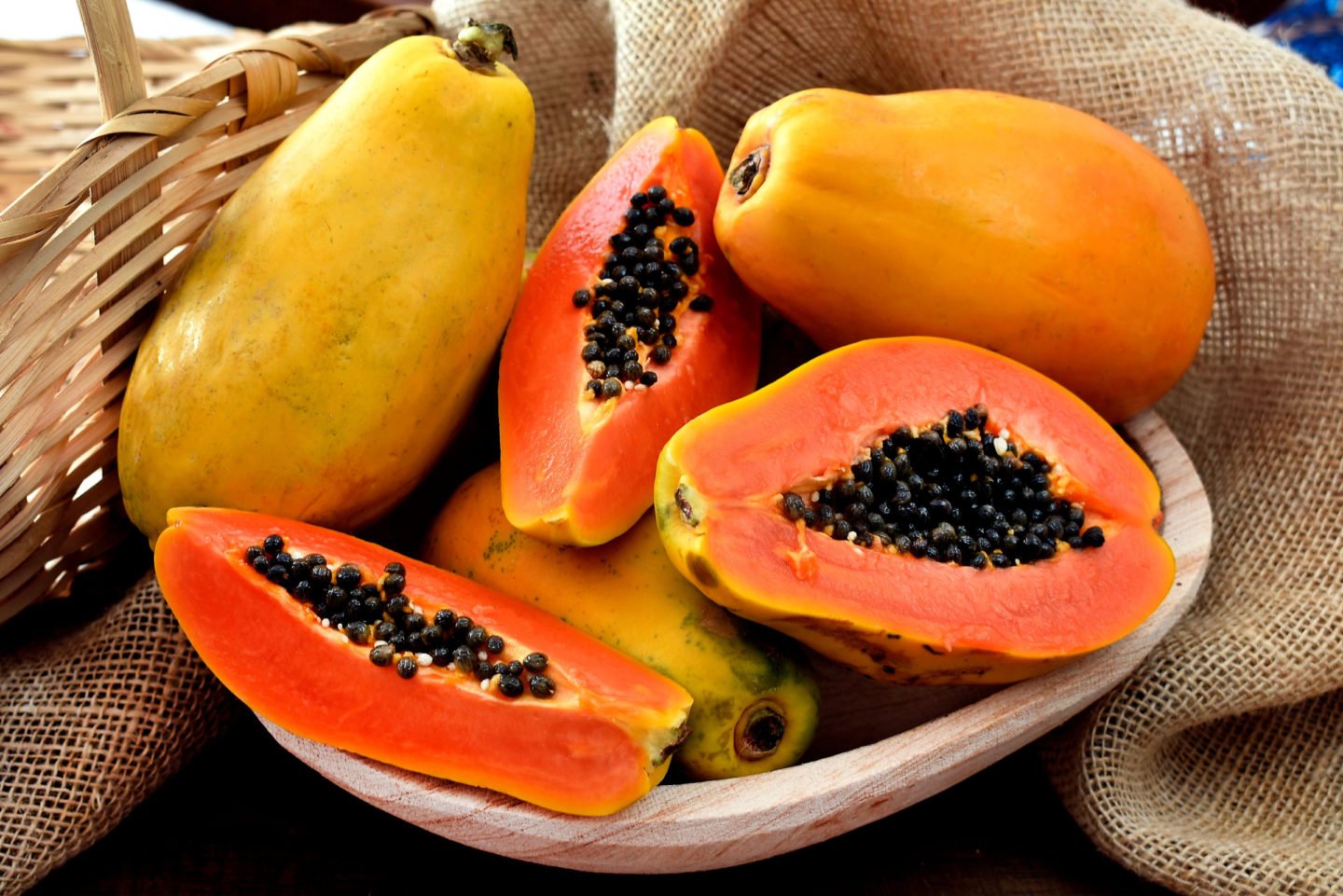
Color
Both fruits have green skin when they’re unripe. Once ripened a pawpaw is yellow with some patches of green whilst a papaya is yellowish-orange.
The ripe flesh of a pawpaw is yellow with an orange tinge and papaya has a reddish pink-colored flesh.
Flavor
Papaya and pawpaw have a noticeably different flavor. Pawpaw is a mild, slightly tangy-tasting fruit that could be loosely compared to a banana. It has rich, creamy flesh that is luxurious and sometimes compared to custard.
Papaya has a stronger, sweeter taste that’s found in many tropical fruit types. Although it has a unique flavor, it’s best described as a cross between a cantaloupe and mango. When eaten at the right time, its texture is creamy and the flesh melts in your mouth.
Did you know? The pawpaw is related to the soursop as well as the cherimoya and atemoya.
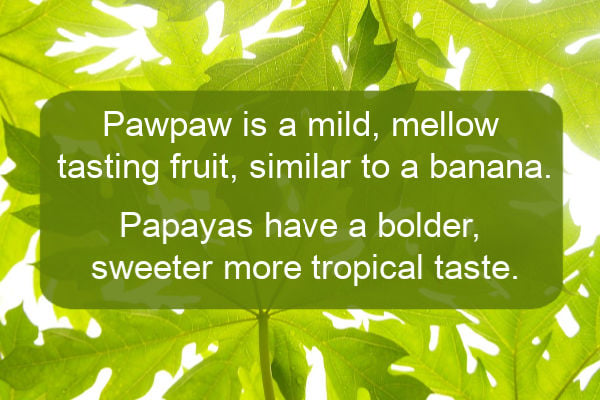
Storage
Both types of unripe fruit should be placed in a paper bag with a sealed top. Leave them on the counter for a couple of days until ripe. Placing a pear or apple in the bag can help speed up the ripening process.
Ripe pawpaw and papaya should be stored in a sealed plastic bag in the fridge. They will keep for up to 1 week but eating within two days is recommended.
To store for up to 12 months, the papaya and pawpaw can be frozen. Slice the fruit lengthwise and scoop out the seeds before cutting them into pieces. Place in an airtight container at the back of the freezer to reduce temperature fluctuation.
Best Uses
Pawpaw is delicious eaten in slices raw. It can be used in many other recipes including fruit salads, puddings, chutney, salsa, bread, muffins, and much more.
The vibrant color of papaya makes it an excellent choice sliced into pieces as a snack. It is also perfect for breakfast smoothies, fruit salads, and desserts. Papaya can also be dried and eaten on the go as a snack; be warned though, like most dried fruit, it is very sweet.
Green papayas have much less flavor and are popular in Asian cuisine. Slice unripe papaya finely into stir-fries, stews, pickles, and chutney. It can even work well as a meat tenderizer.
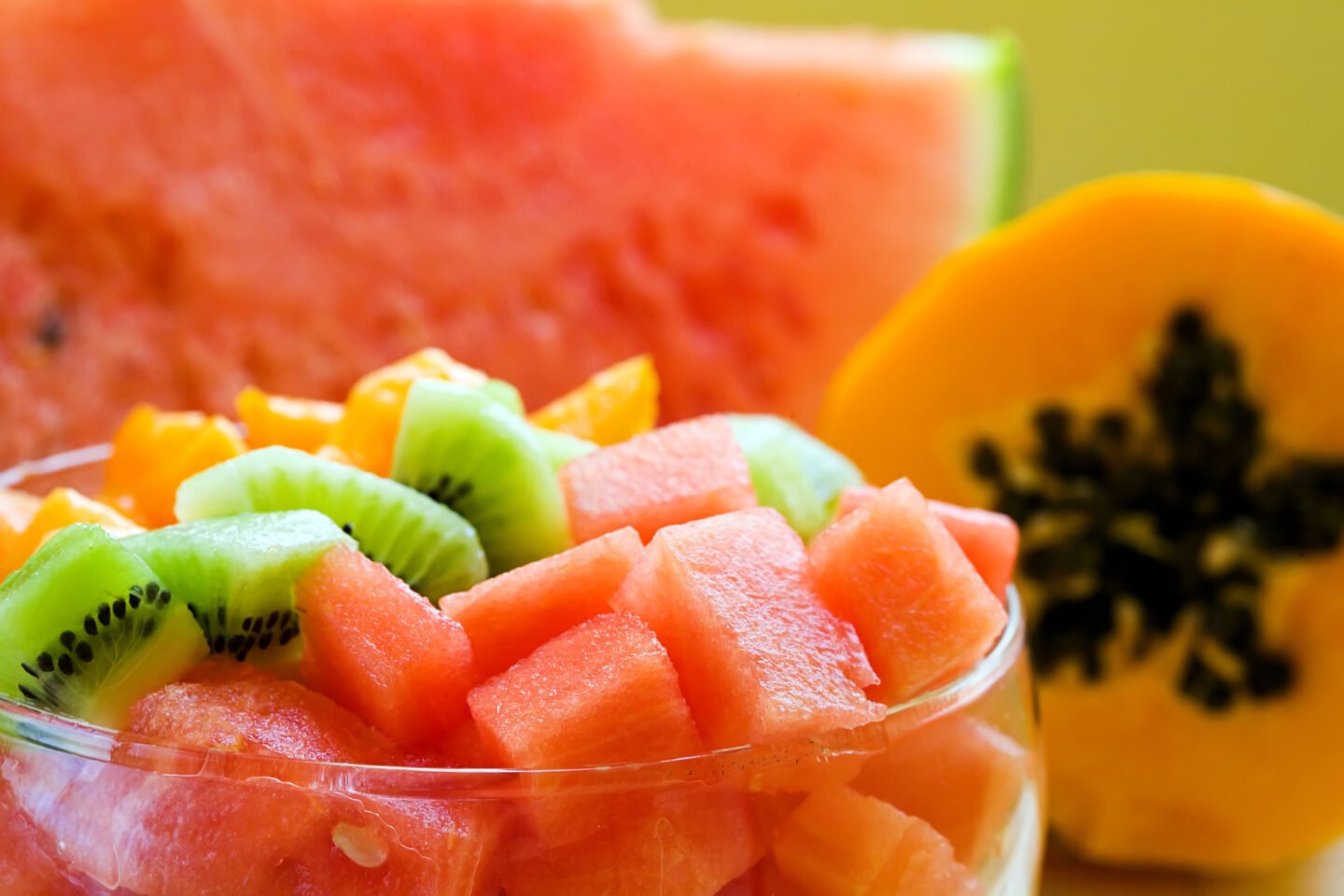
Fruit Trees
Papaya trees (Carica papaya) grow upwards in search of sunlight. They can reach heights of around 30 feet (10 meters). The pawpaw tree (Asimina triloba) prefers to spread itself out like a shrub and only reaches 7 feet (2 meters) in height.
Nutritional benefits
The pawpaw and papaya are both packed with nutritional goodness including antioxidants, vitamin C and A, folate, potassium, and fiber. Pawpaw is excellent for relieving indigestion while papaya is believed to help reduce stress.
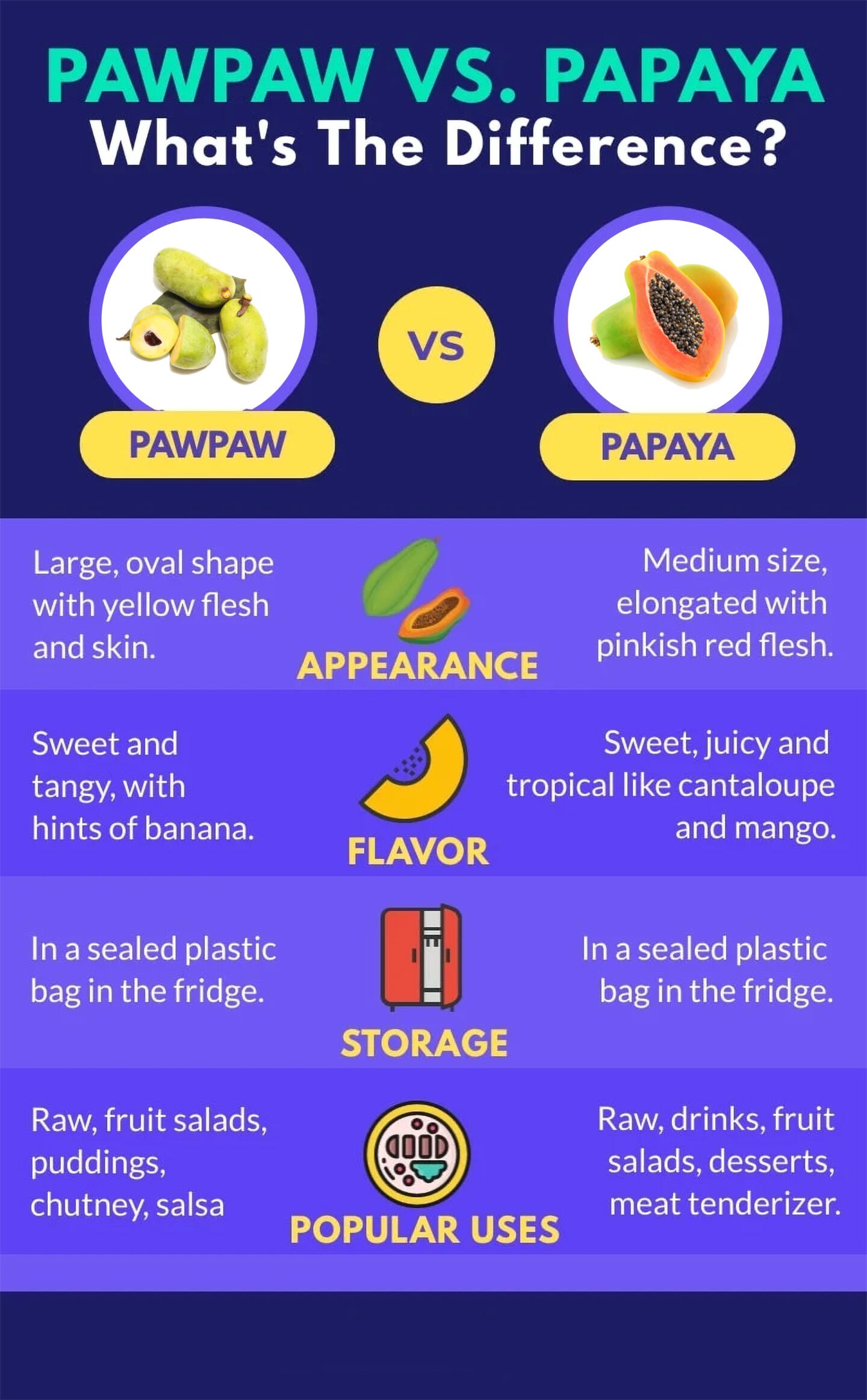
Cooking tips
- The seeds of papayas can be ground up and used as a substitute for pepper.
- Drizzle a halved and seeded pawpaw or papaya in honey and butter then bake for a simple dessert.
- Add a splash of lime juice to either fruit when eating them raw as it will enhance the flavor.
- Use a melon baller to scoop balls of fruit into a bowl along with vanilla ice cream.
Related articles:
What can I use as a substitute for papaya?
What does kiwano melon taste like?
What are some useful guava paste substitutes?
Summing Up
When comparing pawpaw vs papaya, they can look similar at a glance, and having similar names doesn’t help with the confusion.
The easiest way to tell them apart is their shape; a pawpaw will have a larger rounded shape and a papaya is more elongated. Once chopped open, you’ll discover pawpaw flesh is yellow whilst papaya flesh is a more vibrant red shade.
The other big difference between these fruits is their taste. A pawpaw is a mellow flavored fruit and is often compared to a banana. Papayas are a sweeter option with a more pronounced tropical taste.
Although the two fruits have their differences, in the kitchen you could use them interchangeably. If you find yourself at the supermarket unsure which one to buy think about your flavor preferences. Would you prefer papayas for a stronger, more tropical taste or pawpaws for a milder fruity flavor?
Reference:
https://en.wikipedia.org/wiki/Caricaceae

Leave a Reply